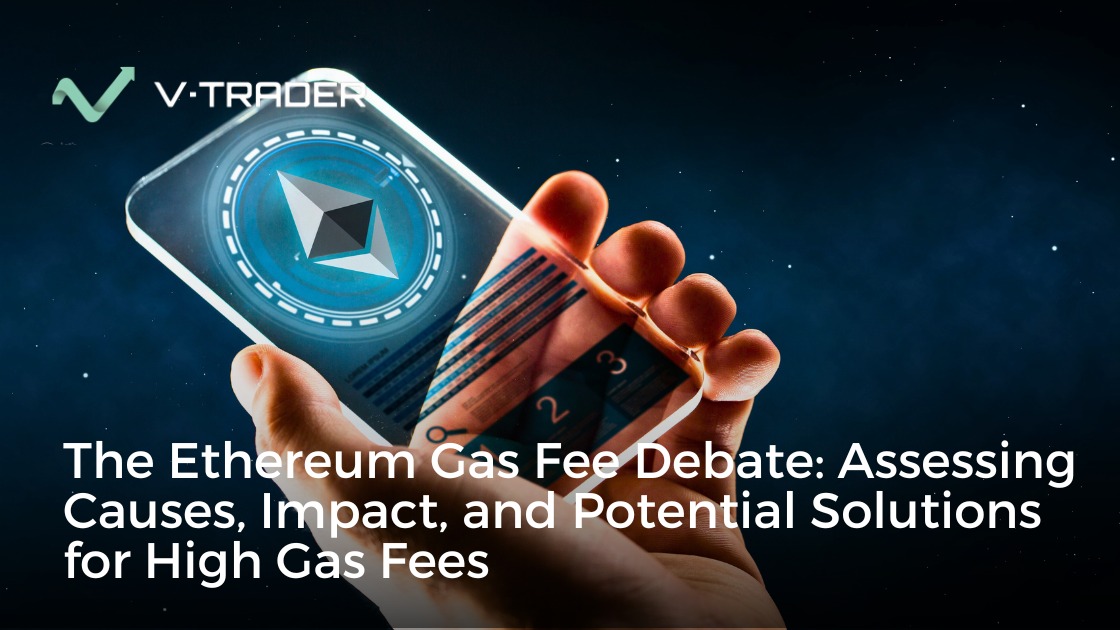Introduction
The Ethereum network has garnered widespread adoption and popularity, but it has also faced persistent challenges, particularly regarding high gas fees. Gas fees, which are the costs associated with executing transactions and smart contracts on the Ethereum blockchain, have become a subject of intense debate within the Ethereum community. This article aims to analyze the ongoing discussion surrounding high gas fees, exploring the causes behind their rise, their impact on users and the broader ecosystem, and potential solutions that have been proposed, including layer 2 scaling solutions and other improvements.
Understanding High Gas Fees on Ethereum
Causes of High Gas Fees: The primary driver of high gas fees on Ethereum is network congestion. As Ethereum’s popularity has surged, the demand for block space has outpaced the network’s capacity to process transactions efficiently. The limited block size and the proof-of-work consensus mechanism contribute to congestion during periods of high activity. Additionally, complex smart contracts and decentralized applications requiring more computational resources can lead to increased gas fees. The interaction between supply and demand for block space determines the level of gas fees users must pay to have their transactions processed.
Also Read: Binance Disassociates Itself from Binance Nigeria Limited Amidst Regulatory Concerns
Impact on Users: High gas fees have significant implications for Ethereum users and the broader ecosystem. For individual users, high fees erode the affordability and usability of the network, especially for small-scale transactions. This hampers the adoption of decentralized applications and limits participation in the Ethereum ecosystem. Developers also face challenges as higher gas fees increase the cost of deploying and interacting with smart contracts, hindering innovation and stifling the growth of the decentralized finance (DeFi) sector. Additionally, high fees can drive users to seek alternative blockchain platforms, potentially diluting Ethereum’s market dominance.
Proposed Solutions for High Gas Fees
Layer 2 Scaling Solutions: Layer 2 scaling solutions have emerged as a potential remedy for high gas fees on Ethereum. These solutions aim to alleviate congestion on the main Ethereum network by processing transactions off-chain or in separate sidechains and periodically settling them on the Ethereum blockchain. Examples of layer 2 solutions include optimistic rollups, zk-rollups, and state channels. These technologies offer higher transaction throughput, lower fees, and faster confirmation times, while still leveraging the security and decentralization of the Ethereum mainnet.
Also Read: Crypto Market’s Recovery Hinges on Enhanced On-Chain App Experience
Ethereum 2.0 and Proof-of-Stake: Ethereum 2.0, an upgrade to the Ethereum network, presents a long-term solution to high gas fees. By transitioning from the energy-intensive proof-of-work consensus mechanism to a more energy-efficient proof-of-stake model, Ethereum aims to significantly increase scalability and reduce transaction costs. Ethereum 2.0 introduces shard chains, allowing parallel processing of transactions and smart contracts, effectively expanding the network’s capacity. However, the full implementation of Ethereum 2.0 is a complex process and may take several years to complete.
Also, Read: China Prepares to Inject Trillions of Dollars into Cryptocurrencies
Other Improvements: In addition to layer 2 scaling solutions and Ethereum 2.0, several other proposals seek to address high gas fees. EIP-1559, a significant protocol upgrade scheduled for activation in August 2021, introduces a fee market mechanism that aims to make gas fees more predictable and improve the overall user experience. EIP-3074 and EIP-3198 propose gas optimizations to reduce the computational burden and gas costs associated with smart contract execution. These improvements, combined with ongoing research and innovation, aim to optimize the Ethereum network and alleviate the gas fee issue.
Conclusion
The ongoing debate around high gas fees on the Ethereum network reflects the challenges faced by one of the most prominent blockchain platforms. The causes of high gas fees, primarily network congestion, have had a significant impact on users and the broader ecosystem, hindering usability, adoption, and innovation. However, potential solutions, including layer 2 scaling solutions, Ethereum 2.0, and various protocol improvements, offer promising paths forward. As Ethereum evolves, addressing the issue of high gas fees will be crucial to unlocking its full potential and ensuring the network’s scalability, affordability, and accessibility for users and developers alike.
Written by Agbo Obinnaya.
Check out our Ethereum Gas Fee App on App Store.
Check out our Ethereum Gas Fee App on Play Store.
Join the conversation on Twitter: Click here.
For media inquiries or interviews, please get in touch with us here.
About vTrader News:
vTrader News is a renowned international news platform with comprehensive coverage of cryptocurrency, business, finance, technology, and entrepreneurship.
With a global readership, vTrader News provides unparalleled insights into the latest developments shaping the world of cryptocurrency, finance, and other emerging industries.
Learn More About vTrader: Click here.


